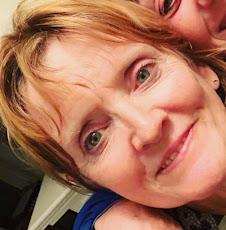The Wall
“We don’t need no education, we don’t need no thought control” …. Just a few of the lyrics on one of the songs on the album The Wall by Pink Floyd, which was published in 1979, when I was a sophomore in high school. I remember singing this song when we rode the bus home from school. Maybe this was my connection to the term …
Wall means so many things but today it’s all about the “la frontera” or the US / Mexico Border. I am not here to sway your political convictions …. But to share my own reflection. Of riding my bicycle along the border and of staying at a dude ranch that has the border wall as one of the corners of the property. It’s an odd thing to walk out to such a glorious, decadent courtyard, still sleepy from a lovely night’s slumber, and see the looming steel beams that slice through the landslide.
Today we buzzed along roads – wide gravel roads – that were constructed for the sole purpose of protecting these walls. We are in a town called Sasabe which is split in two … the Mexico side was a town with 2,000 people who recently fled the torture of the drug cartels. And the US side is a town of 50 people who have one of three reasons to live here: patrol the border, work in the immigration center where asylum seekers who have crossed over are housed behind a huge gate before they are hauled off in white buses with painted windows, or cater to the tourists like me who are here to visit the Buenos Aires Wildlife Refuge to see birds, pronghorns, and deer.
In the past two days I have ridden 64 miles of remote dirt roads … that weave in and out of the wildlife refuge … and in and out of cattle ranches. I have seen more cows than people on my travels. I have seen 5 Border Patrol vehicles and talked to one lonely Army ranger who was posted at the very top of a very steep hillside. I have seen 8 campsites with an array of impressive huge RVs, tents, tables and ATVs that are complete with men clad in hunting gear who are there to hunt deer. And I have stopped at two places – the Welcome Center at the wildlife refuge (Barbara will talk all day about her passion for the pronghorn ) and the Sasabe store which is a small market that sells alcohol, cold drinks, fresh burritos and an odd assortment of touristy stuff that is stamped with “Where is Sasabe?”.
What strikes me is the randomness of a border. We are in the middle of nowhere, in a place with nothing but striking beauty, open vistas of desert, but with a huge iron wall slicing down the middle of the scenery. Our rides take us on and off the wall, but I am always acutely aware of the location. As if my orientation is based on it. With the iconic Baboquivari mountain always north of me and the wall always south, it seems impossible to get lost out here.
I can’t imagine how they ever defined the exact border line. Where one household should speak Spanish and another should speak English, one spends pesos another spends dollars, and where one place is safe and another is tortured by gangs. I can imagine a time where people had to decide which side of it they belonged to, with endless miles of dry open desert the exact location would not have been that significant. The location to water I am sure was a key factor, but still ….. Whatever was the process.
 My mind takes me to a western, with a man on a horse in a black suit. He arrives in my village, the town of Sasabe, to tell me that if I stay on the north side of the street I will be an American and on the south side of the street I will be Mexican. And so it begins … I imagine, for a long time not much changed. Maybe a tax collector would come through and shake me down for being on one side or another. But eventually the reality would show up; a construction crew that blasts through the middle of the town constructing an enormous wall. And now, I am American or I am Mexican …. And I must pass through a gate with a complicated process to even visit my neighbors.
My mind takes me to a western, with a man on a horse in a black suit. He arrives in my village, the town of Sasabe, to tell me that if I stay on the north side of the street I will be an American and on the south side of the street I will be Mexican. And so it begins … I imagine, for a long time not much changed. Maybe a tax collector would come through and shake me down for being on one side or another. But eventually the reality would show up; a construction crew that blasts through the middle of the town constructing an enormous wall. And now, I am American or I am Mexican …. And I must pass through a gate with a complicated process to even visit my neighbors.
And now I am either on the side of the wall being tortured by the drug cartels or the American side selling burritos to tourists who are hungry from exploring a national wildlife refuge.


